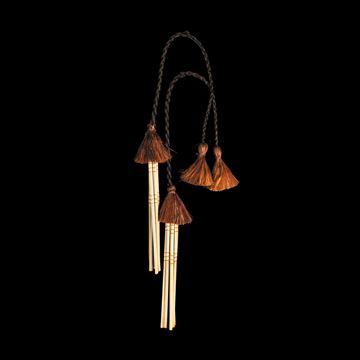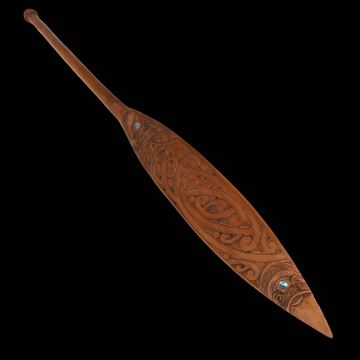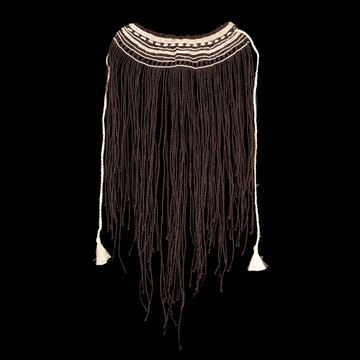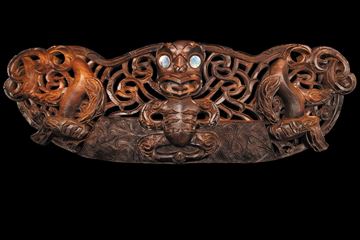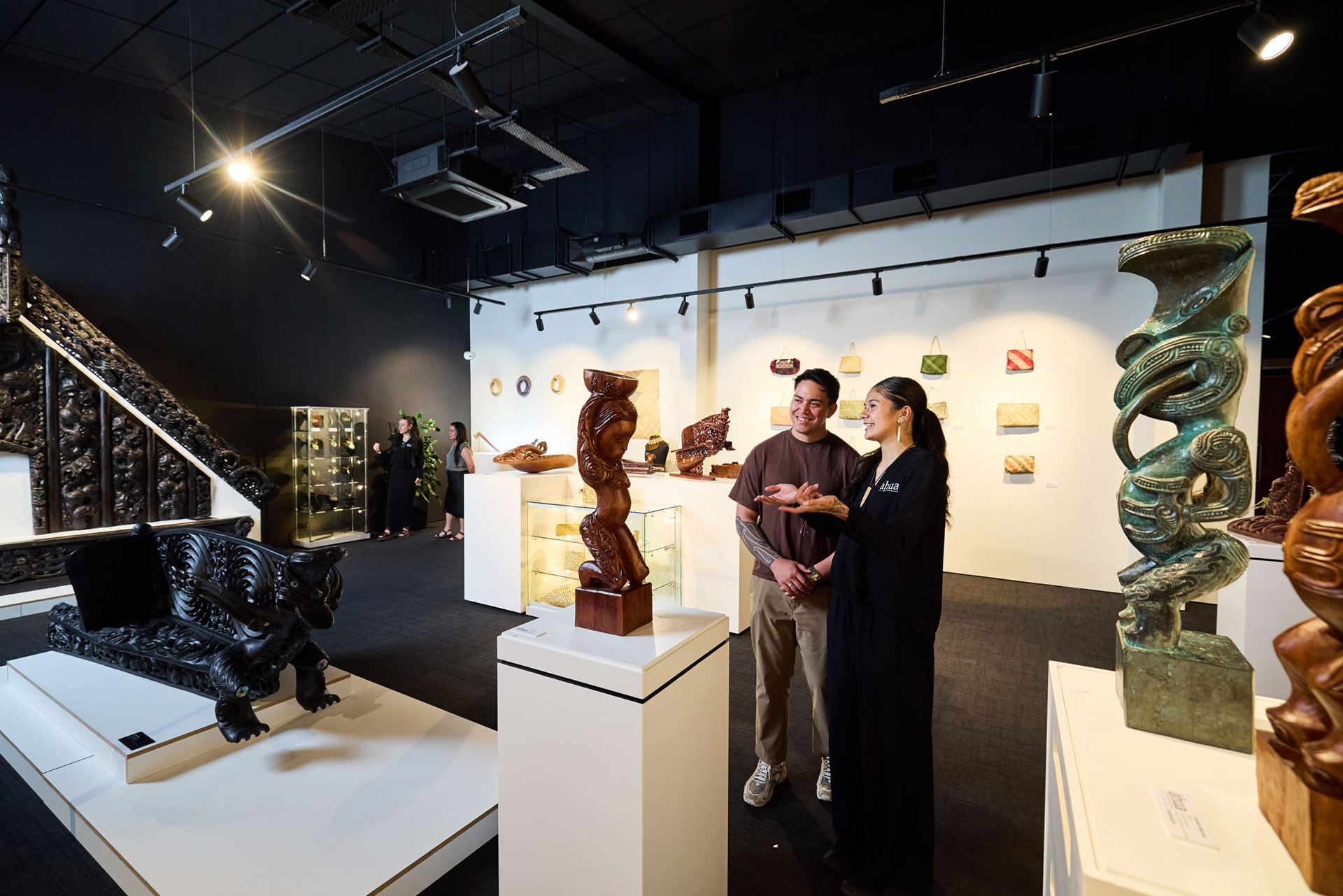
Āhua Gallery
Select Subcategory
Poi Piu - 5833RW
Poi piu are simple poi made from the hardened and curled piupiu strands of flax. Poi piu was used as percussion instruments played to the beat of Māori chanting.
Material: Harakeke & Muka
Measurements: 650mm Long
$495.00
Hoe - 5873CF
Smaller hoe such as this were used in ceremonies such as the launching of a waka taua or war canoe, and in other rituals also. This particular hoe has the northern fish scale design or unaunahi on the front. Although the hoe looks quite simple, its not until you turn it around to see the reverse side of the hoe you see the beauty of the taitokerau serpent art. The twisting shape is said in some versions to represent an eel, another version says it is based on a stick insect. Many hoe have a concave or dished out back, where as this one has the northern figure carved in the dish, making it very unusual.
Material: Tōtara (Redpine)
Measurements: 640mm x 62mm x 18mm
$2,890.00
Neck Piece - 6800AE
Hei Piu (neck piece) are contemporary fashion statements utilising Māori tradition
Material: Muka
Measurements: 180mm x 590mm
$590.00
Pare - 4770KA
Pare were traditionally installed above thew front door of a house belonging to someone of high tribal standing and can also be found across the top of the main doorway into a meetinghouse. Customarily pare delineated spaces, particularly those between tapu (restricted) and noa (un-restricted) environments.
Material: Tōtara
Measurements: 1030mm x 360mm x 80mm
$5,900.00

